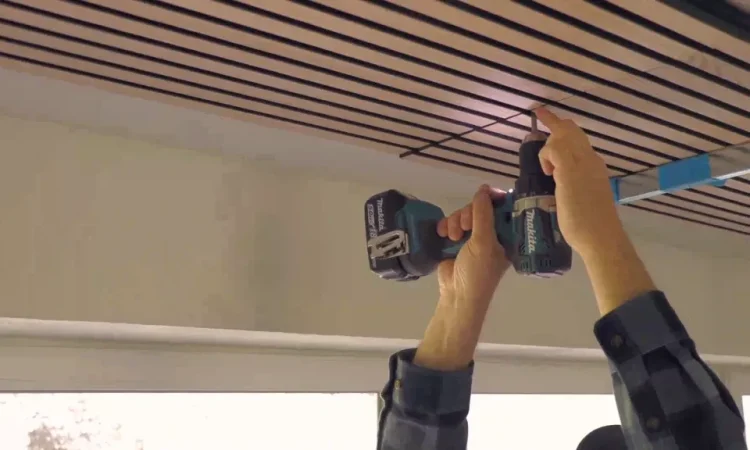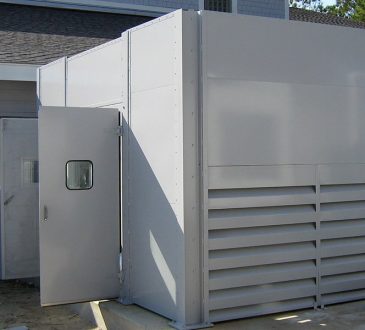
If you’ve ever clapped your hands in a room and heard the sound bounce back at you, you’ve already had a taste of poor acoustics. Whether it’s an echo in the living room or too much noise carrying through the ceiling, unwanted sound can quickly ruin the comfort of your space. That’s where acoustic ceiling panels come in.
They’re not just for music studios or commercial buildings anymore. More and more homeowners are discovering how these panels can transform their homes, making them quieter, cosier, and more enjoyable to live in. So, if you’re thinking of installing acoustic ceiling panels but aren’t quite sure where to begin, this guide is for you.
What Are Acoustic Ceiling Panels, Exactly?
In simple terms, acoustic ceiling panels are materials installed on or suspended from the ceiling to absorb sound. Their job is to reduce noise, minimise echo, and prevent sound from bouncing around a room. These panels don’t block sound entirely like soundproofing materials do — instead, they help manage how sound behaves within a space.
Made from materials like fibreglass, foam, or fabric-wrapped mineral wool, they’re designed to be lightweight and effective without looking bulky. Some are even decorative, blending seamlessly into the design of your home.
Why Would You Need Them at Home?
At first glance, acoustic panels might sound like overkill in a residential setting. But think about it — our homes are noisier than ever. Open-plan living spaces, tiled floors, and large windows might look beautiful, but they do very little to absorb sound. Here’s how acoustic ceiling panels can help:
- Cut down on echo in large or open rooms
- Create a more pleasant soundscape for watching TV or listening to music
- Improve privacy by limiting how far sound travels between rooms
- Make home offices more professional-sounding on video calls
- Reduce noise from above, especially in flats or multi-storey homes
In short, they’re not just a solution for audiophiles or musicians — they’re useful for anyone looking to make their home more peaceful.
Where Are They Most Useful?
Acoustic ceiling panels are ideal for areas of the home where sound tends to be a problem. Here are some common spots:
Living Rooms
Large living rooms with high ceilings or hard surfaces often suffer from echo. Ceiling panels can help soften the space without changing its design.
Home Theatres
Whether you have a dedicated cinema room or just a great sound system, panels can improve clarity and make movie nights feel more immersive.
Open-Plan Kitchens and Dining Areas
The combination of chatter, clinking dishes, and hard floors can be overwhelming. Acoustic treatment in the ceiling helps reduce the chaos.
Home Offices
If you’re working from home, a quiet space can make all the difference. Ceiling panels improve focus and professionalism during calls.
Bedrooms
For homes near busy streets or in shared buildings, panels can help minimise outside noise and make sleep easier.
What Do They Look Like?
Many people worry that installing acoustic panels will make their home look too industrial or “techy.” But modern panels come in all sorts of styles. You can find:
- Flat panels in neutral tones that blend into white ceilings
- Fabric-wrapped options in stylish colours and patterns
- Slatted wood designs for a natural, Scandinavian-inspired feel
- Customisable panels that double as artwork
Some panels are mounted directly onto the ceiling, while others are suspended in a “cloud” formation, which can create a floating, design-forward look.
What About Installation?
Installation doesn’t have to be difficult, especially if you’re handy around the house. However, the process can vary depending on the type of panel and the ceiling surface.
For Direct Mount Panels:
- Panels are glued or screwed directly onto the ceiling
- Ideal for lower ceilings or minimal installations
- Often used in small rooms or home offices
For Suspended Panels (Acoustic Clouds):
- Hung a few inches below the ceiling using wires or brackets
- Provide better sound absorption due to the air gap
- Common in large, open spaces with high ceilings
Professional vs. DIY
You can absolutely DIY your installation, especially if the panels come with a clear mounting kit. But if you’re covering a large area, want a polished look, or have awkward ceiling angles, hiring a professional can be worth the investment.
Things to Consider Before You Buy
Here’s what to keep in mind when choosing acoustic ceiling panels:
1. Purpose
Are you trying to reduce echo, block noise, or improve sound clarity? Different panel types serve different functions.
2. Material
Foam panels are affordable and easy to install, but may not look as sleek as fabric or wood options. Fibreglass panels offer excellent performance and are often wrapped in fabric for style.
3. Size and Coverage
Larger rooms or more severe echo problems will need more panels. A good rule of thumb is to treat around 20–30% of your ceiling area.
4. Aesthetic
Think about how the panels will look with the rest of your décor. Some brands allow for custom colours and designs.
5. Budget
You can find options for every price range, from basic foam panels to premium designer solutions.
Are There Any Drawbacks?
As helpful as they are, acoustic ceiling panels aren’t perfect for every situation. A few things to consider:
- They don’t fully soundproof a room — they manage sound within the space, but don’t completely block external noise.
- They may lower the ceiling slightly, especially with suspended options.
- Cheap or poorly installed panels can look messy or ineffective.
Still, when chosen carefully and installed properly, the benefits far outweigh these minor drawbacks.
Final Thoughts
Acoustic ceiling panels might not be the first thing you think of when updating your home, but they’re an underrated upgrade that can make a big difference. Whether you’re chasing better sound for movie nights, craving more peace and quiet, or simply looking to soften the echo in your space, these panels offer a smart, subtle solution.
You don’t need to live in a recording studio to enjoy good acoustics. Sometimes, just a few well-placed panels can change the entire feel of a room, making it more inviting, more comfortable, and a lot more enjoyable to spend time in.
Would you like a printable checklist for homeowners on choosing ceiling panels?




